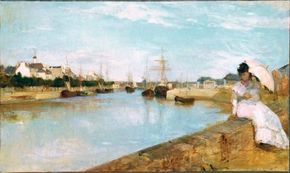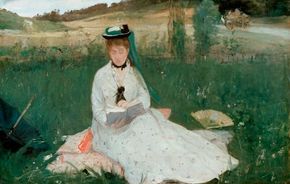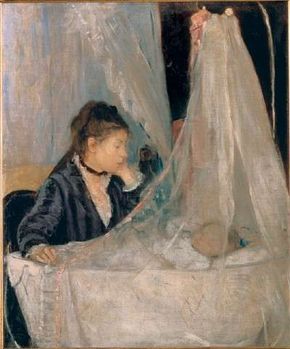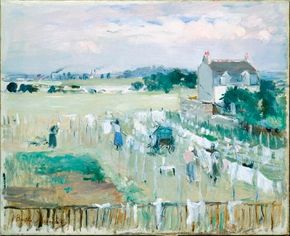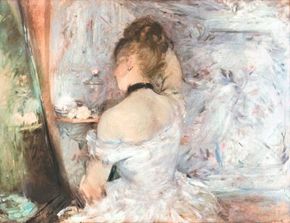Berthe Morisot (1841-1895), a talented pupil of the pastoral painter Camille Corot, experienced mild success when Edoaurd Manet introduced her to a circle of young painters. These painters welcomed her into their circle, where they debated ideas about contemporary art. Eventually this circle was to be known as the Impressionists.
As one of the only women in the Impressionist group, Berthe Morisot found herself drawing special attention from contemporary critics -- including one critic who dismissed the Impressionists as "five or six lunatics, including one woman" -- both for her gender and for her deft brushwork. In Impressionist paintings such as The Cradle and Hanging the Laundry out to Dry, Berthe Morisot examined the day-to-day lives of contemporary women, but in all of them, she displays the grace and intimacy that were the hallmarks of the Impressionist movement.
Advertisement
Follow the links below to learn more about Berthe Morisot, one of the only female Impressionist painters.
- The Harbor at Lorient: Berthe Morisot, like Camille Pissarro, was a dedicated outdoor painter. Learn about The Harbor at Lorient, an example of plein air painting.
- Reading: Reading by Berthe Morisot was praised by critics as graceful and confident. Learn about Morisot's Reading, which was completed in 1873.
- The Cradle: In The Cradle, Berthe Morisot examined the daily lives of ordinary women. Learn about The Cradle, by Berthe Morisot.
- Hanging the Laundry out to Dry: Hanging the Laundry out to Dry by Berthe Morisot exemplifies the artist's gift for using light and color. Read about this Impressionist painting, which debuted at the Impressionists second exhibition.
- Woman at her Toilette: Berthe Morisot's 1881 painting Woman at her Toilette is an example of Morisot's continued interest in capturing the quiet moments of women's lives. Read about Berthe Morisot's Woman at her Toilette, notable for its intimacy.
The first painting we'll look at by Berthe Morisot is notable for its execution of the ideas of her teacher, Camille Corot.
For more on Impressionist paintings, artists, and art history, see:
For more on Impressionist paintings, artists, and art history, see:
Advertisement
